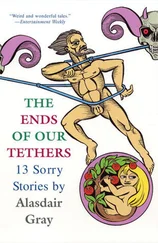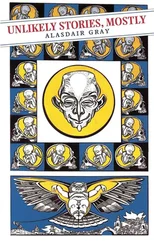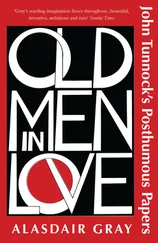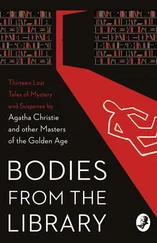It is a low, light arm-chair with a wooden frame, made not long after the Second World War when money was more evenly spread, materials were in short supply, extravagant use of them was thought wasteful and ugly. Yet this chair does not look cheap. The elegantly tapered curves of the legs, the modestly widening, welcoming curve of the arms owe something to Japan and Scandinavia as well as aeroplane design. The seat and back are not thickly upholstered but so well supported that they feel perfectly comfortable. All the furniture Zoë owned looks and feels good. There was once another chair exactly like this one, and a sofa matching them. If people wanted a standard arm-chair I would honestly propose this one, as James Watt proposed a healthy workhorse without defects as the standard by which the power of artificial engines is measured to this day. Or does that last sentence show I am living in the past? Have engineers stopped measuring the strength of engines in horse-power? Are horses as extinct as whales? Is the Watt no longer a unit of electrical force? Watt was an 18th-century machinist from Greenock who invented the coal-fired water vapour engine. Has Rudolf Diesel’s compression fired oil vapour engine supplanted Watt’s terminology as well as his machines? Don’t panic. I suspect this is a word problem, a quilt-doovay problem, not destruction-of-Scottish-achievement-by-German-achievement problem. Unless I describe the usual colour of the chair the oddity of its conduct a week ago cannot be described.
The parts of the woodwork designed to be seen have been polished, stained and varnished to a medium chocolate colour that almost hides the grain. The upholstery is covered by a russet red fabric I found annoyingly bright before it faded. When in bed I view the chair in profile, like the chair Whistler’s mother sits on, and see a tall narrow hole in the fabric of the back of the side, a hole through which at least twenty-four inches of pale unpolished unvarnished timber appear like a bone seen through an open wound. This hole has not been worn or torn open but shredded, as by a cat’s claws — threads and shreds of fabric dangle down from the edges all round it. In the years when I rummaged in cupboards I found other evidence of a cat: a plastic feeding dish with FLUFFY printed on the sloping sides, and behind containers of Marmite Yeast Extract and Granny’s Tomato Soup a tin of Whiskas Supermeat, Chicken and Rabbit Variety. Most sinister of all, behind the long-lost matching sofa I once saw a cardboard box more than two feet square with an arched hole like a door cut into one side, and crayoned over the sides and top a pattern suggesting brickwork, with the words CAT-PALACE, MOG-A-DEN and FLUFFY HOUSE. This writing was not in Zoë’s hand. It suggested that before she helped me up from the pavement and brought me home here she loved another human being as well as a cat, somebody who enjoyed fishing. There was a wicker creel under the bed, an angling rod in the wardrobe, waders in the lobby press. I said nothing about these articles and one day I came home and they had gone. I said nothing, because out of sight is out of mind if I want it to be, nor did I mind Fluffy ripping at the chair. Cats invented themselves by clawing their way up and down tree trunks and scratching soil or grass over their excrement. Forbidding cats to scratch is like forbidding humans to cut their nails and hair. Also, the chair was not responding to Fluffy in the year I found the pellet. It was brightening and darkening. The dim russet fabric glowed and flickered, then leapt into dazzling vividness like when new, but with a moving pattern of leaves dancing over it in a very irregular way. This pattern (dull red on bright russet) was dove grey on creamy ivory over the exposed timber. For half a minute the chair persisted in this way then suddenly, like an exhausted dancer, slumped in two or three seconds back to its ordinary dull old colours. Had the chair been remembering leaves it had seen in earlier days?
Glancing through the window I noticed a remarkable coincidence. The leaves of the ash tree had the shapes and dancing movements of the pattern which had recently faded from the chair. And I saw another coincidence! Leaves, branches and trunks were flickering, lashing, swaying in the same direction and with the same turbulence as ragged whiteish-grey clouds in the sky beyond, clouds with shifting patches of blue and gleams of unpredictable sunlight between them. Without its underground roots every part of that tree would have flown off with the clouds, which shows the infectious force of a strong example. Had the air between the tree and clouds been visible I might have seen it rushing along too. For a moment I considered working out how the movements within the chair had been caused. People will pay a lot of money for objects that blaze and flicker, as television sets and games machines in public houses show. But I am too old to venture into show business. It is enough for me to passively enjoy the play of natural coincidences and actively enjoy the play of inward speculation. These two plays led to my famous discovery. Of course they did.
Einstein had died without establishing the unified field hypothesis, all the physicists had agreed the thing was impossible when I — a botanist — proved that every part and particle of the universe reflects every other part and particle and every past and eventual possibility inherent in each part and particle. My dissertation proving the identity of sense and motion in water lilies also proved the identity of sense and motion everywhere! And it cleared away all the paradoxes in Newtonian gravitation by showing that Kepler as well as Einstein had been right all along. Look at a star. Astronomers will say it is a distant sun or nebula, but even a moth can see it is a body of light. We know it gives light because we live inside the radiance of the gift — live inside the star. That twinkling little item is the core or central pip of a radiant fruit containing every other star and galaxy. My discovery angered many clever people, for by proving that loneliness is a convenient form of ignorance it left them nowhere to hide. “Nonsense!” roared the hearty pragmatists, “The light, heat, sounds et cetera given out by a body are not parts of the body, they are its excrement. Some bodies fling useful shit at us, some fling the dangerous kind so we need to identify the sources. The source you call a star is a mass of fissile material exuding beams essential to life and useful to navigators.”
People with this self-centred view cannot be faulted. They want to be nothing but cockroaches in the larder of the universe, so have no interest in the rest of the palace. There was more dignity in the wrath of a great French scientist who was also a practising catholic, and so obsessed by the needless division between mind and body — so certain that only a God outside the universe could redeem what he thought was its horrible nature — that he would not see the regenerative side of my discovery.
“The silence of these vast spaces appals me,” he said, talking about the gaps between the stars. I told him these gaps were spaces between the bodies in a busy market where light was being exchanged so rapidly our eyes could not catch it. “Imbecile!” he cried, “Do you not know that whole blazing star systems are receding from us faster than light can travel, and will collapse into black cinders without a single ray or thought from them ever reaching the frozen cinder which was once our little world?”
I pointed out that while answering me his own mind had overtaken these blazing systems, had survived their extinction and returned to our own extinct world, enlivening it with one ray of impossible light, dignifying it with an impossibly gloomy thought. He frowned and said, “You are playing with words. Words are an expression of thought, not a physical force.”
Читать дальше












